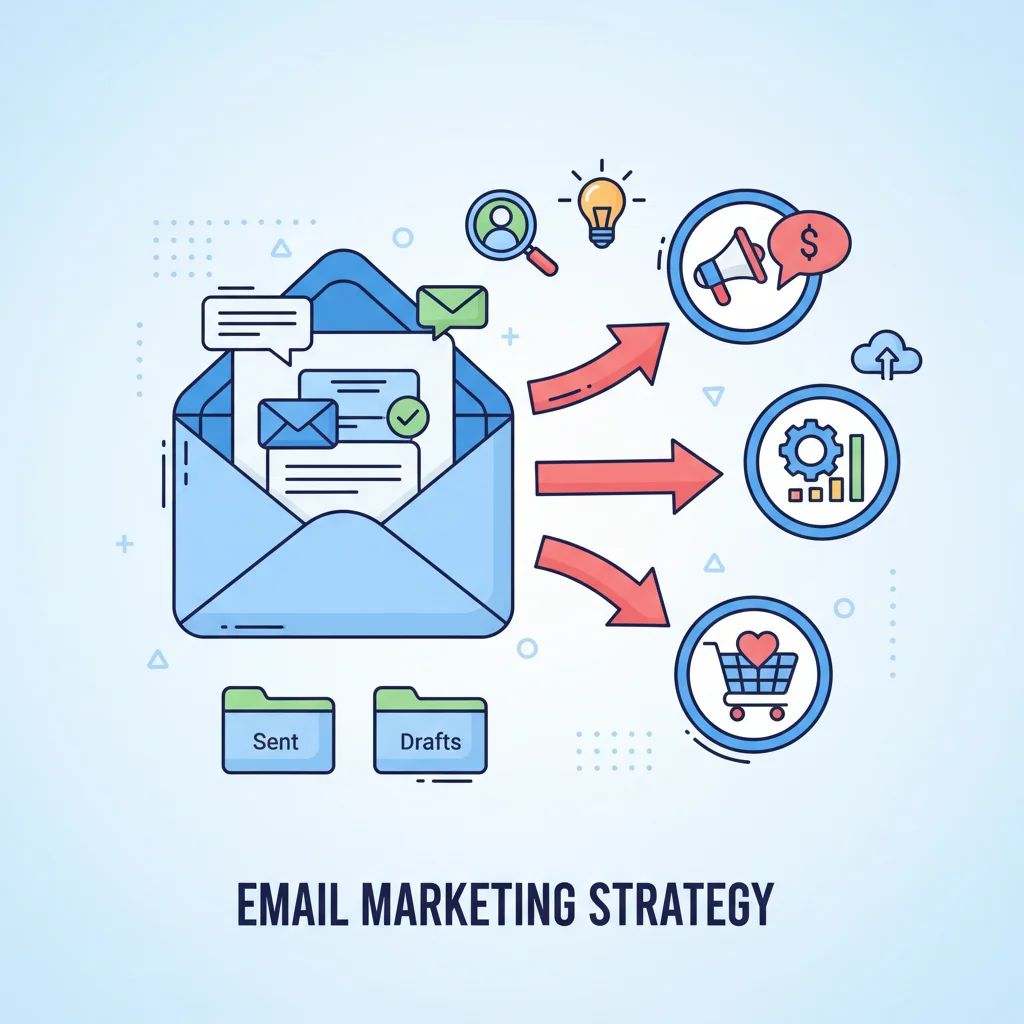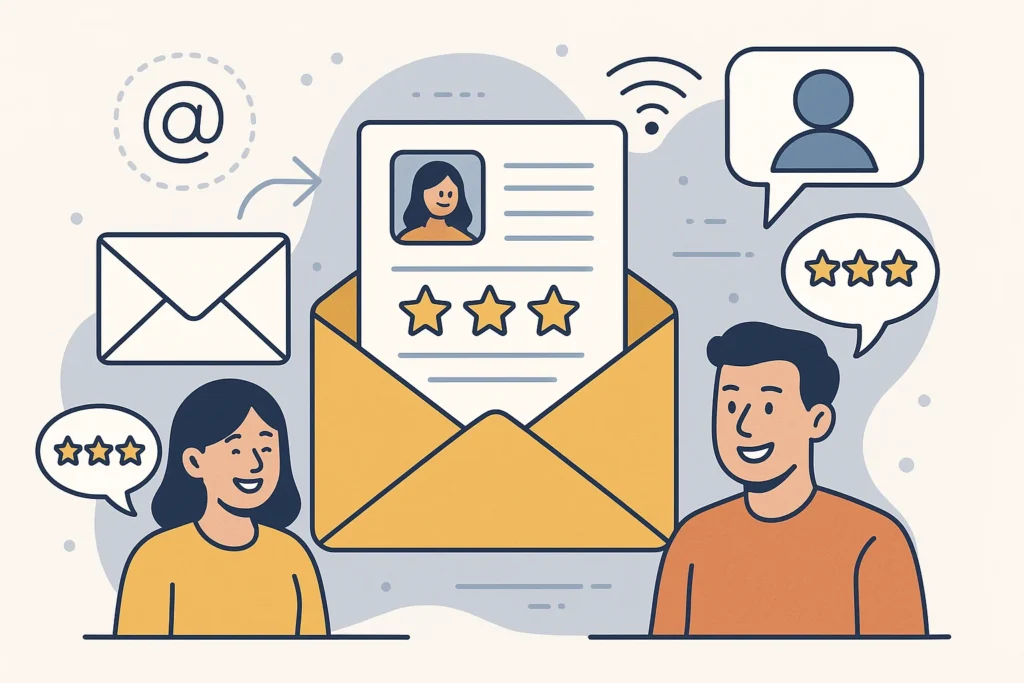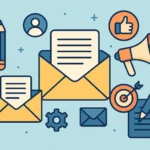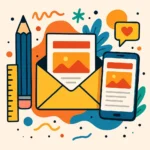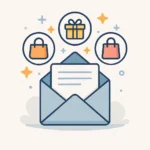Now Reading: How to Create Abandoned Cart Email Sequences That Convert
-
01
How to Create Abandoned Cart Email Sequences That Convert
How to Create Abandoned Cart Email Sequences That Convert

You’ve seen it happen. A customer adds products to their cart, gets to checkout, and then… poof! They’re gone. Cart abandonment is the silent killer of e-commerce profits, with over 70% of shoppers abandoning their carts before completing a purchase. The good news? You can recover a significant portion of these lost sales when you create abandoned cart email sequence that speaks directly to your customers’ needs and objections.
Key Takeaways
- Create a 3-email sequence: send the first reminder 1-2 hours after abandonment, the second 24 hours later, and the final email 48 hours after that
- Personalize each email with the customer’s name, cart items (with images), and a clear call-to-action
- Start with a friendly reminder, then add urgency or social proof in the second email, and consider offering an incentive in the final email
- Keep subject lines simple and direct, focusing on what the customer left behind
- Test different timing, content, and offers to optimize your sequence for your specific audience
Why You Need An Abandoned Cart Email Sequence
Let’s face it-cart abandonment is a pain in the butt. You’ve done all the hard work to get customers to your site, they’ve browsed around, added products to their cart… and then they bounce. Ugh.
The good news? You can win back a significant chunk of those almost-customers with a well-crafted abandoned cart email sequence.
I’ve seen firsthand how a good sequence can recover anywhere from 10-15% of abandoned carts. That’s serious money being left on the table if you’re not doing this right.
The cold, hard stats
Before we dive into how to create your sequence, let’s look at why this matters:
- The average cart abandonment rate is around 70%
- Abandoned cart emails have an average open rate of 45% (way higher than regular marketing emails)
- The first email in a sequence has an average conversion rate of 4-5%
- A three-email sequence can recover 3-4x more revenue than a single email
These numbers don’t lie. Creating an effective abandoned cart email sequence is one of the highest-ROI activities you can do for your e-commerce business.
Useful Articles:
How To Create An Effective Abandoned Cart Email Sequence
Creating an effective abandoned cart email sequence isn’t about bombarding customers with desperate pleas to come back. It’s about the right message, at the right time, with the right incentive.
Here’s my step-by-step process:
Step 1: Set up customer data collection
Before you can send abandoned cart emails, you need to capture customer data. This means:
- Collecting email addresses early in the checkout process
- Using pre-submit tracking to identify customers who abandon carts
- Segmenting customers based on cart value, products, and previous purchase history
Most e-commerce platforms like Shopify, WooCommerce, or BigCommerce have built-in functionality or apps that make this easy. The key is capturing that email address before the customer bounces.
Step 2: Plan your email sequence structure
A good abandoned cart email sequence typically includes three emails:
Email 1: The Reminder (1-2 hours after abandonment)
- Simple, friendly reminder
- Show what’s in their cart (with images)
- Clear call-to-action button
- No discount (yet)
Email 2: The Follow-Up (24 hours after abandonment)
- Add urgency or social proof
- Remind them of what they’re missing
- Address common objections
- Still no discount (save that for later)
Email 3: The Last Chance (48-72 hours after abandonment)
- Create stronger urgency
- Offer an incentive (discount, free shipping)
- Final call-to-action
- Make it clear this is their last reminder
This structure works because it gives customers multiple chances to complete their purchase without immediately resorting to discounts that eat into your margins.
Step 3: Craft compelling subject lines
Your subject line is make-or-break for open rates. For abandoned cart emails, simplicity and clarity work best:
For Email 1:
- “Did you forget something?”
- “Your cart is waiting for you”
- “[Product name] is still in your cart”
For Email 2:
- “Don’t miss out on “
- “Your cart is getting lonely”
- “Still thinking about your cart?”
For Email 3:
- “Last chance: 10% off your cart”
- “Final reminder: Complete your purchase”
- “We saved your cart, but not for long”
Notice how these are straightforward and focused on the cart or products-no need to get fancy here.
Crafting Each Email In Your Sequence
Now let’s break down exactly what should go into each email in your abandoned cart sequence.
Email 1: The Gentle Reminder
The first email should be sent 1-2 hours after abandonment. This timing is crucial-research shows that emails sent within this window have the highest conversion rates.
What to include:
- A friendly, non-pushy tone
- Clear images of the products left in cart
- Product details (size, color, price)
- A prominent “Return to Cart” button
- Customer service contact info
Example:
Subject: Did you forget something?
Hi [Customer Name],
Looks like you left some great items in your cart! We've saved them for you:
[Image of Product]
[Product Name]
[Color/Size/Variation]
[Price]
Ready to complete your purchase? Your cart is just a click away.
[RETURN TO CART] button
Need help? Our team is standing by at [email/phone].
Thanks,
[Your Name]Keep it simple and focused on getting them back to checkout. No need for fancy design or long copy here.
Email 2: Adding Urgency and Social Proof
If the customer doesn’t bite on the first email, it’s time to send a follow-up about 24 hours after abandonment.
What to include:
- Mild urgency (limited stock, popular item)
- Social proof (reviews, testimonials)
- Address common objections (return policy, shipping info)
- Same cart contents as first email
- Clear call-to-action
Example:
Subject: These items are selling fast!
Hi [Customer Name],
Just wanted to let you know that the items in your cart are pretty popular right now. We can't guarantee they'll be in stock much longer:
[Image of Product]
[Product Name] - Only [X] left!
[Color/Size/Variation]
[Price]
"I absolutely love this product! Best purchase I've made this year." - [Customer Name]
Remember, we offer free returns within 30 days if you change your mind.
[COMPLETE YOUR PURCHASE] button
Thanks,
[Your Name]This email works by creating FOMO (fear of missing out) and addressing potential concerns that might have caused the abandonment.
Email 3: The Final Offer
The last email in your sequence should be sent 48-72 hours after abandonment. This is where you can bring out the big guns-discounts or special offers.
What to include:
- Limited-time discount or free shipping offer
- Strong urgency (last chance language)
- Cart contents reminder
- Final, compelling call-to-action
Example:
Subject: 10% off your cart - today only!
Hi [Customer Name],
This is your last chance to grab the items in your cart-and we're sweetening the deal with 10% off if you complete your purchase today.
[Image of Product]
[Product Name]
[Color/Size/Variation]
[Price with discount applied]
Use code COMEBACK10 at checkout to claim your discount. This offer expires at midnight tonight!
[CLAIM MY DISCOUNT] button
Thanks,
[Your Name]The key here is creating a sense of finality-this is their last chance to get these items, and with a special discount that won’t be offered again.
Useful Articles:
Personalization Strategies That Convert
Personalization is what separates high-converting abandoned cart emails from ones that get ignored. Here’s how to make your emails feel tailor-made for each customer:
Product-specific personalization
Don’t just remind customers they have “items” in their cart-show them exactly what they’re missing out on:
- Include high-quality images of the actual products
- Mention specific product names in the subject line
- Reference product features or benefits in the email copy
For example, instead of “Your cart is waiting,” try “That red dress is waiting for you!” This specificity triggers the emotional connection they already made with the product.
Cart value personalization
Adjust your approach based on cart value:
- High-value carts ($100+): Offer more personalized service, like a direct line to customer support
- Medium-value carts: Focus on product benefits and social proof
- Low-value carts: Consider free shipping offers instead of percentage discounts
This targeted approach ensures you’re not cutting into margins unnecessarily while still recovering sales.
Browse and purchase history personalization
If you have data on previous customer behavior, use it:
- For repeat customers: “We noticed you loved [Previous Purchase]. The [Abandoned Item] would go perfectly with it!”
- For first-time browsers: “Join [X] happy customers who’ve purchased [Abandoned Item] this month”
This level of personalization shows customers you understand their preferences, making them more likely to complete their purchase.
Timing Your Abandoned Cart Emails For Maximum Impact
Timing can make or break your abandoned cart email sequence. Here’s what the data tells us works best:
First email timing
The first email should go out 1-2 hours after cart abandonment. Why?
- The purchase is still fresh in the customer’s mind
- They may have been distracted and simply need a reminder
- If sent too soon (under 1 hour), they might still be shopping
- If sent too late (after 3+ hours), they may have purchased elsewhere
Research shows that abandoned cart emails sent within 1 hour have a 16% higher conversion rate than those sent later.
Follow-up email spacing
Space out your emails to avoid annoying customers while staying top-of-mind:
- Email 1: 1-2 hours after abandonment
- Email 2: 24 hours after abandonment
- Email 3: 48-72 hours after abandonment
This spacing gives customers time to consider their purchase without forgetting about it entirely.
Time of day considerations
Beyond the delay from abandonment, consider when your emails will actually land:
- Avoid sending between 10pm-7am local time
- If your first email would land during these hours, delay until morning
- Weekend vs. weekday timing may affect open rates for your specific audience
Some email platforms allow you to optimize send times based on when individual customers typically open emails-use this feature if available.
Useful Articles:
Subject Lines That Get Your Emails Opened
Your subject line is the gatekeeper to your abandoned cart email. Here are strategies that work:
Keep it simple and direct
The most effective abandoned cart subject lines are straightforward:
- “You left something behind”
- “Your cart is waiting”
- “Complete your purchase”
These clear, concise subject lines outperform clever or cryptic ones because they immediately remind customers of their unfinished business.
Create mild urgency (without being spammy)
A touch of urgency can boost open rates:
- “Your cart expires soon”
- “[Product] is selling fast”
- “Last day to complete your order”
Just be careful not to cross into fake urgency territory-if you say “Last chance!” in every email, customers will stop believing you.
Personalize when possible
Including the specific product or the customer’s name can increase open rates by 20-30%:
- “Alex, did you forget your running shoes?”
- “Your new camera is waiting in your cart”
- “Complete your order for [Product Name]”
This personalization immediately connects customers to the specific items they were interested in.
Designing Your Abandoned Cart Emails
The design of your abandoned cart emails should be simple, focused, and on-brand. Here are my best practices:
Keep the focus on the products
Your abandoned cart emails should prominently feature:
- Clear, high-quality product images
- Product names, variants (size/color), and prices
- A single, obvious call-to-action button
Avoid cluttering the email with unnecessary elements that distract from the main goal-getting customers back to checkout.
Mobile optimization is non-negotiable
Over 60% of emails are opened on mobile devices, so your abandoned cart emails must look great on small screens:
- Use a single-column layout
- Make buttons large enough to tap easily (at least 44×44 pixels)
- Ensure text is readable without zooming
- Test on multiple devices before launching
A poor mobile experience can kill your conversion rates, no matter how good your copy is.
Brand consistency matters
Your abandoned cart emails should feel like a natural extension of your website:
- Use the same color scheme and fonts
- Maintain your brand voice and tone
- Include your logo and standard footer elements
This consistency builds trust and reminds customers of their positive experience browsing your store.
Tools And Platforms For Creating Abandoned Cart Email Sequences
You don’t need to build your abandoned cart email system from scratch. Here are some tools that make it easy:
E-commerce platform integrations
Most major e-commerce platforms have built-in abandoned cart functionality or apps:
- Shopify: Abandoned Cart Recovery (built-in) or apps like Klaviyo
- WooCommerce: Follow-Up Emails or Abandoned Cart Pro
- BigCommerce: Abandoned Cart Saver (built-in)
- Magento: Abandoned Cart Emails extension
These native integrations are often the easiest place to start.
Email marketing platforms
Dedicated email marketing platforms offer more advanced features:
- Klaviyo: Powerful e-commerce email platform with advanced segmentation
- Omnisend: Visual workflow builder for complex sequences
- ActiveCampaign: Automation-focused platform with CRM features
- Drip: E-commerce-specific email platform with strong personalization
These platforms typically offer pre-built abandoned cart templates and workflows you can customize.
All-in-one marketing automation tools
For larger businesses, these comprehensive solutions offer abandoned cart recovery alongside other marketing features:
- HubSpot: Complete marketing suite with e-commerce integrations
- Mailchimp: Email platform with growing e-commerce features
- Rejoiner: Specialized in cart abandonment and recovery
These tools often come with higher price tags but offer more sophisticated capabilities.
Creating an abandoned cart email sequence doesn’t have to be complicated. Start with a simple three-email sequence, focus on personalization and clear calls-to-action, and continuously test and optimize. With the right approach, you can recover a significant portion of otherwise lost sales and boost your bottom line. So what are you waiting for? It’s time to create abandoned cart email sequences that actually work!


